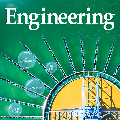The machine learning (ML) life cycle involves a series of iterative steps, from the effective gathering and preparation of the data, including complex feature engineering processes, to the presentation and improvement of results, with various algorithms to choose from in every step. Feature engineering in particular can be very beneficial for ML, leading to numerous improvements such as boosting the predictive results, decreasing computational times, reducing excessive noise, and increasing the transparency behind the decisions taken during the training. Despite that, while several visual analytics tools exist to monitor and control the different stages of the ML life cycle (especially those related to data and algorithms), feature engineering support remains inadequate. In this paper, we present FeatureEnVi, a visual analytics system specifically designed to assist with the feature engineering process. Our proposed system helps users to choose the most important feature, to transform the original features into powerful alternatives, and to experiment with different feature generation combinations. Additionally, data space slicing allows users to explore the impact of features on both local and global scales. FeatureEnVi utilizes multiple automatic feature selection techniques; furthermore, it visually guides users with statistical evidence about the influence of each feature (or subsets of features). The final outcome is the extraction of heavily engineered features, evaluated by multiple validation metrics. The usefulness and applicability of FeatureEnVi are demonstrated with two use cases, using a popular red wine quality data set and publicly available data related to vehicle recognition from their silhouettes. We also report feedback from interviews with ML experts and a visualization researcher who assessed the effectiveness of our system.
翻译:机器学习(ML)生命周期包括一系列迭代步骤,从有效收集和编制数据,包括复杂的地物工程流程,到展示和改进结果,以各种算法从每个步骤中作出选择。特别地物工程对ML非常有益,导致许多改进,如提高预测结果,减少计算时间,减少过度噪音,以及提高培训期间所作决定的透明度。尽管存在若干视觉分析工具,以监测和控制ML生命周期不同阶段(特别是与数据和算法有关的数据和算法有关的),但地物工程支持仍然不足。在本文件中,我们展示了Seatar Envii,这是一个视觉分析系统,专门设计用来协助地物工程流程。我们提议的系统帮助用户选择最重要的特征,将原始特征转换为强有力的替代品,并试验不同地物生成组合。此外,数据空间覆盖使用户能够了解当地和全球范围内的地形特征。Envii使用多种自动地物选择技术;此外,我们用Setar Enette用户的视觉导视像,具体用来评估我们每个地物质研究的深度数据,并且通过对每个地块的精度的精度评估,对各种结果的精度进行实地评估。




